
Fun review activity with an Amazing Race Theme.
- Subject:
- Science
- Material Type:
- Homework/Assignment
- Author:
- ERIN WOLFHOPE
- Date Added:
- 04/06/2020

Fun review activity with an Amazing Race Theme.

Fun review activity with an Amazing Race Theme.

Fun review activity with an Amazing Race Theme. Use online in LMS of your choice. (Discovery Education website NOT used in this version)

Remix of 6.E.2.1 Amazing Race by, Erin Wolfhope.

This parent guide supports parents in helping their child at home with the 6th grade Science content.

This resource accompanies our Rethink 6th Grade Science course. It includes ideas for use, ways to support exceptional children, ways to extend learning, digital resources and tools, tips for supporting English Language Learners and students with visual and hearing impairments. There are also ideas for offline learning.

Students read two descriptions of Earth's interior structure and summarize similarities and differences between the two and answer a series on analysis questions.
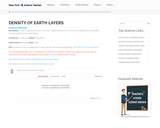
The purpose of this lab is to measure the density of materials which are thought to make up the crust, mantle, and core. Students will determine the mass and volume of several rock samples and then use the data to calculate density and make inferences about the densities of earth materials.

Students examine seismic evidence to determine that the Earth must have a layered internal structure and to estimate the size of Earth's core. Note that lesson plan and supporting documents must be downloaded from this website.

Students will work in collaborative teams to construct models to show various aspects of Earth.
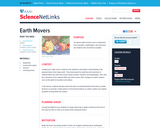
Students explore plate tectonics and understand how mountains, earthquakes, and volcanoes are related to the movements of plates.

In this activity, students walk a path to help them visualize Earth's immense size and structure without the usual scale and ratio distortions.
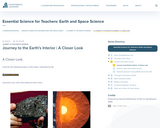
This lesson has two parts. In part one, students use Slinkys to demonstrate S and P waves and then discuss how the motions of earthquakes might provide scientists with information about the Earth's interior. In the second part, students use toy putty to model the mantle of the Earth.
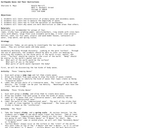
Students will investigate waves through a series of activities. They will differentiate compressional, surface and transverse waves and how each of these waves acts during an earthquake. Students will also explore how a seismograph works and practice locating and plotting earthquake epicenters. Then, students will study liquefaction and relate it to damage due to earthquake waves.
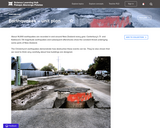
In this unit, students will use analogies to investigate and explain the Earth's layers. They will also model tectonic plate boundaries and movements.

This interactive resource provides background information about the powerful forces that shape our world. The tutorial includes descriptions of the layers of the Earth, what causes earthquakes and volcanic eruptions, how glaciers shape the land, and the theory of plate tectonics.

In this lesson, students will develop understanding of the structure of the Earth’s interior by constructing a scale model of a “slice†of the interior of the Earth and studying the material properties of Earth’s interior. The activity also provides useful practice with the concept of scale.

In this lesson, students use an egg to represent our planet Earth and better understand the ratio and proportion of the crust, mantle, and core. Students will also be introduced to the scientific theory of plate tectonics.
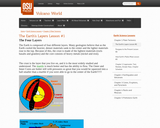
This lesson teaches the students about the different layers of the Earth and how they work together. Students will be able to: Name and label the four layers of the Earth; Identify the main minerals that make up each layer; Explain how scientists formulated the idea that the Earth is comprised of four layers.

With this resource, students will learn about the structure of the earth by building a human earth.